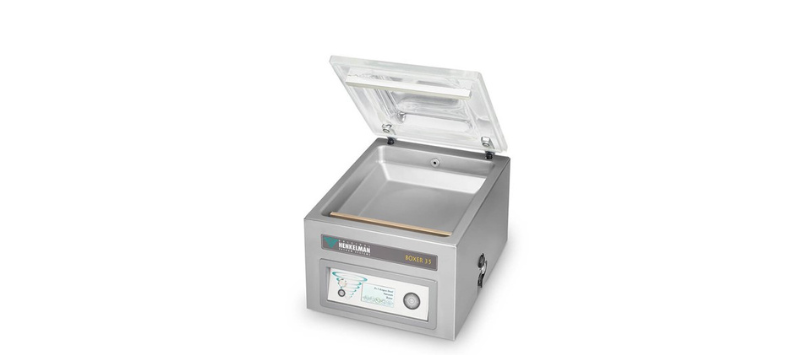Vacuum sealing can provide a whole range of benefits for commercial foodservice operators. While some of them are common or expected, there are a few other benefits that might be a bit more surprising.
When using a commercial vacuum sealer like those made by Invacus/Henkelman USA, operators gain both short and long-term benefits, and operators can use them for a wide array of ingredients and dishes. Let's look at some of the main benefits -- both expected and surprising -- that a vacuum sealer can provide.
The Expected Benefits of Vacuum Sealing
As one might expect, vacuum sealers are ideal for storage purposes. By sealing in freshness and removing air, operators can remove the potential for freezer burn and extend the shelf life for just about any ingredient, all while preserving food quality.
Ultimately, we waste between 30 and 50 percent of our food waste in the United States, and a large part of that waste comes from foods that spoil during storage and handling. With the ability to vacuum seal ingredients and then blast chill or shock freeze them before storage, operators can drastically reduce or even eliminate wasted foods.
The Surprising Benefits of Vacuum Sealing
There are other, less known benefits associated with vacuum sealing, as well. Vacuum sealing can be used to make the logistics of holding and preserving easier and more effective as mentioned above, but it can also be used to help facilitate the creative processes of cooking, as well.
Reduce Strains on Labor
Vacuum-sealed packages are compact and can be stacked efficiently in storage spaces, optimizing the use of available space in walk-ins and reach-ins. This also leads to the potential for bulk preparation, allowing for easier preparation in commercial kitchens that often need to prepare large quantities of food in advance. Vacuum sealing allows chefs to pre-portion ingredients or meals, making it easier to control portion sizes and minimize preparation time during busy service hours. In totality, this can help reduce the strains on labor.
Marinating and Infusing Flavors
Vacuum sealing is a useful technique for marinating foods. By removing air, the marinade is drawn into the food more effectively, resulting in deeper and more even flavor distribution. For creative chefs and mixologists, vacuum-sealing is an opportunity to get creative in the kitchen or behind the bar, making the most of flavor potential. They can even be used to make the perfect dessert.
Sous Vide Cooking
Vacuum-sealed bags are a common choice for sous vide cooking, a method where food is cooked in a water bath at precise temperatures. The vacuum-sealed bags prevent water from entering the food, resulting in consistent and evenly cooked dishes all while preserving desired flavors and aromas. Sous vide cooking is also a great way to prepare meats that are more tender and juicy than other preparation methods.
Seal in Liquids
Typically, vacuum sealing is reserved for solid foods, but chefs can also start sealing in liquids, too. This process is a game-changer for many foodservice operations, as it opens up multiple opportunities to go beyond solid ingredients.
Control Portion Sizes
Precise portion control is vital in commercial kitchens to manage costs and maintain consistent menu offerings. Vacuum-sealed portions allow for accurate measurement and distribution of ingredients. This can decrease food waste costs and increase revenue for foodservice operations.
Learn more about vacuum sealing by visiting the Henkelman Video Library.









